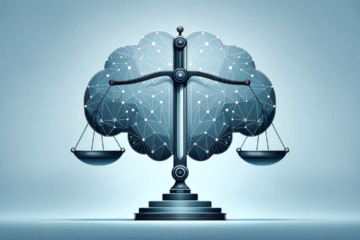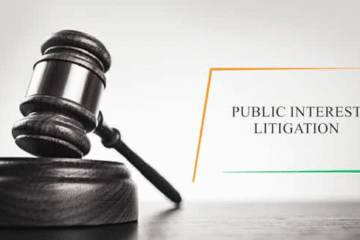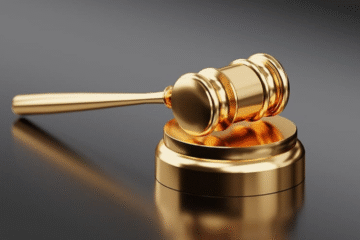
This article is written by Harshita of 9th Semester of B.COM LL. B of IMS Law College, Noida, an intern under Legal Vidhiya
ABSTRACT
The Indian Constitution, a foundation stone of the world’s largest democracy apportions distinct executive powers to the President of India and the Governors of its States. This research outlines the executive authority between these two constitutional bearers within the Indian Constitutional framework. The President, as the head of the State, exercises executive powers in a limited capacity, predominantly focusing on the appointment and dismissal of key officials and the execution of government decisions. Whereas, on the other hand, the Governor represents the President at the state level and exercises executive powers specific to the state’s administration.
This article offers a comprehensive study of these executive powers, their origins and limitations in the Indian Constitution and their roles in upholding democratic governance in India.
Keywords: Executive Power, President, Governor, Constitution, Democracy
INTRODUCTION
Executive power is a fundamental aspect of every democratic society, which is vested in both the President and the Governor of the State. It refers to carry out and enforce the laws, manage government operations, and make important executive decisions. The Indian Constitution, adopted in 1950, meticulously delineates the distribution of power among various branches of the government, with the executive branch upholding a significant influence.
At the apex of the hierarchy of the executive authority stands the President, who represents integrity and sovereignty of the nation and encompassing a wide range of powers including the appointment and dismissal of key officials, assent to legislation, and representing India on international front. Conversely, the Governors appointed for each state serve as the President’s representative at the state.
Understanding the nuances of executive power vested in the President and Governors is vital for comprehending the dynamics of India’s federal and democratic structure.
THE PRESIDENT
The President is the head of the state. He stands as a symbol of unity, integrity and sovereignty of the nation and represents India on international level and affairs. According to Article 52 of the Indian Constitution[1], there shall be a President of India.
It is enshrined under Article 53 of the Constitution that the executive power of the Union shall be vested in the President and shall be exercised by him either directly or through officers subordinate to him in accordance with this Constitution. The expression ‘executive power is not defined in the Constitution[2] and connotes a very wide meaning.
It is thereby provided under Article 73 of the Indian Constitution[3] that the executive power of the Union shall extend to the matters with respect to which Parliament has power to legislate, as well as the exercise of any rights, authority, or jurisdiction granted to the government of India through treaties or agreements.
Article 77 under the Indian Constitution provides for the following key provisions regarding the President’s executive powers which are as follows:
- Clause 1 of Article 77 states that all executive actions of the Government of India shall be formally taken in the name of the President. This means that the President is the formal head of the executive branch of the Indian government, and all decisions and actions of the government are carried out on their behalf.
- Clause 2 specifies that the President shall exercise their powers and functions in accordance with the advice of the Council of Ministers. This means that the President’s executive actions are typically carried out on the advice of the Prime Minister and the Council of Ministers.
- And also, the President of India can create rules to help make the work of the India Government smoothly. These rules can also include which ministers are responsible for handling different tasks and responsibilities.
Executive powers of the president include various powers such as:
Power to Appoint
The President has the power to appoint various officials as per the Indian Constitutional framework which are as follows:
- Prime Minister and other Ministers of the Union
- Judges of the Supreme court and the High court
- The Governors of the States
- The Attorney General
- The Comptroller and Auditor-General
- The Chairman and the Members of the Public Service Commissions
- The Members of the Finance Commission
- The Chief Election Commissioner and the other Election Commissioners
- Special Officers for Scheduled Castes and Scheduled Tribes
Dismissal powers
In the Indian parliamentary system, ministers hold their offices and serve at the pleasure of the President. This means that the President has the power to remove the above mentioned officials according to the procedure prescribed by the Indian Constitution.
Dissolution of Lok Sabha
The president has the power to dissolve lok sabha on the advice of the Prime Minister as provided under Article 85(2)(b) of the Indian Constitution.
Nevertheless, it’s worth highlighting that the President is constitutionally mandated to act in accordance with the advice provided by the Council of Ministers, with the Prime Minister serving as the real head of the state.
Veto power of the President
The President’s veto power, as stated under Article 111 of the Constitution[4], is a significant constitutional check and balance. It states that When a Bill is passed by the Houses of Parliament, it must be presented to the President, who has the authority to either assent to the Bill or withhold assent. However, the President can, after receiving a non-Money Bill, return it to the Houses with a message requesting them to reconsider the Bill or specific provisions. The message may include recommended amendments. If the Bill is returned in this manner, the Houses must review it accordingly.
The President’s veto power is used sparingly and only in exceptional circumstances to ensure that legislation aligns with the Constitution and the principles of democracy.
Ordinance making power
The President has the power to issue ordinance as per Article 123 of the Indian Constitution. These ordinances can be referred to as rules, law and order and are not defined under the Indian Constitution.
It empowers the President to issue ordinances in exceptional circumstances when Parliament is not in session. These ordinances hold the same legal force as Acts of Parliament but are temporary in nature. Ordinances must be presented to both Houses of Parliament when they reconvene, and they automatically expire after six weeks from the date of reassembly. If either house passes a resolution disapproving of the ordinance during this period, it ceases to be effective. Additionally, the President can withdraw the ordinance at any time.
This constitutional provision grants the Executive branch the authority to deal with urgent legislative matters, subject to parliamentary review and control, ensuring that the ordinance-making power is used judiciously.
Pardoning power
Article 72 of the Indian Constitution grants the President the authority to exercise clemency and modify sentences for individuals convicted of offences. This power includes granting pardons, reprieves, respites, or remissions of punishment, as well as suspending, remitting, or commuting sentences.
This power applies to cases where:
(a) The punishment or sentence has been imposed by a court-martial.
(b) The punishment or sentence is for an offense under central laws.
(c) The sentence is a death sentence.
In the case of Epuru Sudhakar v. Government of Andhra Pradesh[5] The court emphasized that pardons, reprieves, and remissions are not mere acts of grace but integral elements of the constitutional framework, reflecting the highest authority’s decision that public interest warrants a less severe penalty. While executive clemency is discretionary, it is not a privilege but an official duty, vested in either the President or the Governor, serving the welfare of both the convict and the public. This discretion must prioritize public interests, with the President and Governor having exclusive authority to assess the sufficiency of facts and appropriateness of granting pardons and reprieves.
It serves as a vital safeguard to ensure compassion within the justice system while respecting the separation of powers between the executive and the judiciary.
Emergency powers
Under the Indian Constitution, the President of India has certain emergency powers that can be invoked in specific circumstances. These emergency provisions are enshrined in Part XVIII (Articles 352 to 360) of the Constitution. There are three types of emergencies which are as follows:
1. National Emergency (Article 352)
- A national emergency can be declared when there is a threat to the security of India due to war, external aggression, or armed rebellion.
- During a national emergency:
- Fundamental Rights guaranteed under Article 19 can be suspended.
- The President can issue orders that are binding across the country.
- The autonomy of states can be reduced, and the President can assume more authority over state governments.
- The term of the Lok Sabha can be extended by a maximum of one year at a time.
- A national emergency must be approved by both houses of Parliament, and it initially lasts for six months, but it can be extended indefinitely with parliamentary approval. This power is exercised by the President on the advice of the Council of Ministers headed by the Prime Minister.
2. State Emergency (President’s Rule) (Article 356)
- The President can impose President’s Rule in a state if there is a failure of the constitutional machinery in that state. This can be done based on the report of the Governor of the state or otherwise.
- During President’s Rule:
- The state government is dismissed, and the Governor’s rule is imposed.
- The state legislature may be suspended or dissolved.
- The President can assume the powers of the state government and make laws for the state.
- President’s Rule initially lasts for six months but can be extended with the approval of the Parliament, up to a maximum of three years.
3. Financial Emergency (Article 360)
A financial emergency can be declared when the financial stability or credit of India or any part of its territory is threatened and has never been invoked till date.
These emergency provisions are intended to maintain the nation’s integrity and constitutional order during times of crisis, ensuring that democracy is upheld even in the face of extraordinary challenges.
From this we can conclude that the executive power vested in the President of a nation is a critical and multifaceted responsibility. It comprises the authority to enforce laws, make critical decisions on national security, and represent the country on the global level. The President’s role as the head of the executive branch is essential for the effective functioning of the government and the nation as a whole. However, it is crucial that this power is exercised judiciously and in accordance with the principles of checks and balances to ensure the preservation of democratic values and to uphold the rights and freedoms of the citizens.
THE GOVERNOR
In India, the executive power of the state is vested in the Governor. Article 153 of the Indian Constitution[6] states that there shall be a Governor for each State. The Governor is the executive head of a state and is appointed by the President of India and represents the state government. While the real executive powers are exercised by the Council of Ministers headed by the Chief Minister.
Article 154 vests the executive power of the state in the Governor. This means that the Governor is the constitutional head of the state’s executive branch and is responsible for its administration. The Governor can exercise this executive power either directly or through officers subordinate to them. While some executive functions are performed directly by the Governor, many are carried out by various officers and departments of the state government.
Furthermore, Article 162 of the Indian Constitution[7] pertains to the extent of the executive power of the state. It reads as the executive power of a State shall extend to the matters with respect to which the Legislature of the State has power to make laws Provided that in any matter with respect to which the Legislature of a State and Parliament have power to make laws, the executive power of the State shall be subject to, and limited by, the executive power expressly conferred by the Constitution or by any law made by Parliament upon the Union or authorities thereof Council of Ministers.
Article 166 under the Indian Constitution provides for the following key provisions regarding the Governor’s executive powers which are as follows:
- All State Government executive actions must be carried out in the name of the Governor.
- Orders and instruments under the Governor’s name must be authenticated as per specified rules. Such orders, once authenticated, cannot be challenged on the basis that they were not made by the Governor.
- The Governor is responsible for establishing rules for the more convenient transaction of the business of the Government of the State, and for its allocation among Ministers.
However, it is important to note here that as like the President, the governor is the ceremonial head of the state and he is to act on the aid and advice of the council of ministers headed by the Chief Minister.
Executive powers of the Governor provided under the Indian Constitution are as follows:
Power to Appoint
The governor as the executive head has several important powers and functions, including the power to make appointments to various offices including:
- Chief Minister and council of Ministers
- The Advocate General of the State
- The State Election Commissioner
- The Chairman and the Members of State Public Service Commission
- The State Chief Information Commissioner and other Commissioners
Dissolution of State Legislature
The Governor has the authority to dissolve the State Legislative Assembly on the advice of the Chief Minister or when a situation arises where there’s no workable government as per Article 174 of the Indian Constitution.
Veto power of the Governor
Article 200 of the Indian Constitution pertains to the power of the Governor of a state to withhold their assent to a state bill. Under this, the governor can exercise his power in three ways:
- Assent to the Bill: The Governor can give their assent to the bill, after which it becomes law and is enacted.
- Withhold Assent: The Governor may choose to withhold their assent to the bill. In this case, the bill does not become law, and it effectively stands rejected.
- Return for Reconsideration: If the Governor has reservations or recommendations regarding the bill, they can return it to the state legislature for reconsideration. The legislature may then decide whether to accept or reject the Governor’s suggestions.
Pardoning power
Article 161 of the Indian Constitution grants the Governor of a state the authority to exercise pardoning powers. The Governor can grant pardons, reprieves, respites, or remissions of punishment, and also suspend, remit, or commute sentences.
While both the President and Governors have the power to grant pardons, the President’s authority is more extensive. The President can pardon death sentences and sentences from court martial, whereas Governors do not have these specific powers.
Ordinance making power
Similar to the ordinance making power of the president, Under Article 213 of the Indian Constitution, the Governor of a State also possesses the authority to promulgate ordinances in specific situations.
These are issued by the Governor when the State Legislature is not in session and when urgent legislative action is deemed necessary. These ordinances hold the same legal force as laws passed by the State Legislature.
However, their validity is contingent upon approval from the State Legislature. The Governor must present the ordinance for review within six weeks from the commencement of the subsequent legislative session. If the State Legislature fails to approve the ordinance within this timeframe, it ceases to have effect.
The Governor in India holds a vital constitutional position as the ceremonial head of the state’s executive branch. While vested with certain executive powers, these are largely exercised in accordance with the advice of the Chief Minister and the Council of Ministers.It is a balanced system where the Governor’s role is integral to the functioning of the state’s executive machinery, in harmony with democratic principles.
CONCLUSION
In conclusion, the Indian Constitution intricately balances the executive powers vested in the President and Governors to ensure effective governance while upholding democratic principles.
The President, as the ceremonial head of state, primarily represents the nation’s unity and integrity. He exercises executive power at the union level, primarily in consultation with the Council of Ministers. While vested with important functions like appointing the Prime Minister and key officials, the President’s actual authority is constrained by the advice of the Council of Ministers. Conversely, Governors play a crucial role at the state level, acting as the representatives of the President and wielding significant executive authority within their respective states. However, it was held by the Supreme Court[8] that the President and the Governors are constitutional heads of the executive and that real executive power was vested in the Council of Ministers and they had to act on the aid and advice of the council of ministers.
Ultimately, the Indian Constitution’s executive power distribution aims to uphold the principles of federalism while preserving the unity of the nation. This delicate balance ensures that both the President and Governors serve as custodians of the Constitution and work in tandem with the elected representatives at the state and national levels to uphold the democratic values enshrined in the Indian Constitution.
REFERENCES
- Epuru Sudhakar & Anr v. Govt. Of A.P. & Ors, Writ Petition (crl.) 284-285 of 2005, 2006
- DR. J.N. PANDEY, CONSTITUTIONAL LAW OF INDIA (58th ed. 2001)
- Shamsher Singh & Anr v. State Of Punjab, 1974 AIR 2192, 1975 SCR (1) 814
[1] INDIA CONST. art. 52
[2] DR. J.N. PANDEY, CONSTITUTIONAL LAW OF INDIA 500 (58th ed. 2001)
[3] INDIA CONST. art. 73
[4] INDIA CONST. art. 111
[5] Epuru Sudhakar & Anr vs Govt. Of A.P. & Ors Writ Petition (crl.) 284-285 of 2005
[6] INDIA CONST. art. 153
[7] INDIA CONST. art. 162
[8] Shamsher Singh & Anr v. State Of Punjab, 1974 AIR




0 Comments